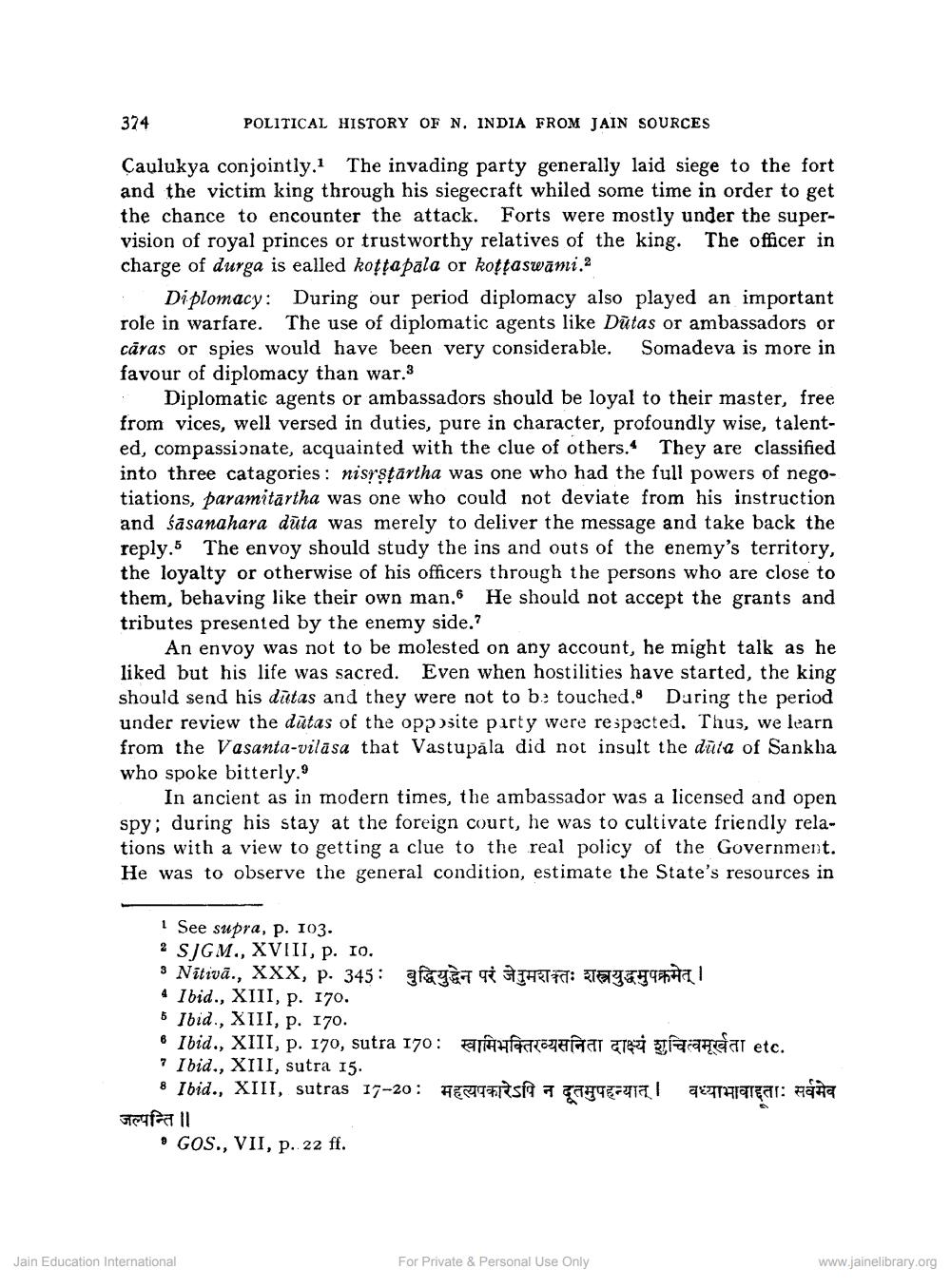________________
374
POLITICAL HISTORY OF N. INDIA FROM JAIN SOURCES
Caulukya conjointly. The invading party generally laid siege to the fort and the victim king through his siegecraft whiled some time in order to get the chance to encounter the attack. Forts were mostly under the supervision of royal princes or trustworthy relatives of the king. The officer in charge of durga is ealled kottapala or kottaswami.?
Diplomacy: During our period diplomacy also played an important role in warfare. The use of diplomatic agents like Dūtas or ambassadors or caras or spies would have been very considerable. Somadeva is more in favour of diplomacy than war.3
Diplomatic agents or ambassadors should be loyal to their master, free from vices, well versed in duties, pure in character, profoundly wise, talented, compassionate, acquainted with the clue of others. They are classified into three catagories: nisysţartha was one who had the full powers of negotiations, paramitartha was one who could not deviate from his instruction and śasanahara dūta was merely to deliver the message and take back the reply.5 The envoy should study the ins and outs of the enemy's territory, the loyalty or otherwise of his officers through the persons who are close to them, behaving like their own man. He should not accept the grants and tributes presented by the enemy side.?
An envoy was not to be molested on any account, he might talk as he liked but his life was sacred. Even when hostilities have started, the king should send his dutas and they were not to b: touched. During the period under review the dutas of the opposite party were respected. Thus, we learn from the Vasanta-vilāsa that Vastupala did not insult the dūla of Sankha who spoke bitterly.9
In ancient as in modern times, the ambassador was a licensed and open spy; during his stay at the foreign court, he was to cultivate friendly relations with a view to getting a clue to the real policy of the Government. He was to observe the general condition, estimate the State's resources in
1 See supra, p. 103. 2 SJGM., XVIII, p. 1o. 3 Nītivā., XXX, p. 345: afaya Q ATT77: TEY9911 4 Ibid., XIII, p. 170. 5 Ibid., XIII, p. 170. & Ibid., XIII, p. 170, sutra 170: Halogalaat CTD Jaragear etc. ? Ibid., XIII, sutra 15. 8 Ibid., XIII, sutras 17-20: 841717sfa 7 qaytaruva! 27argar: fall 9 GOS., VII, p. 22 ff.
Jain Education International
For Private & Personal Use Only
www.jainelibrary.org




